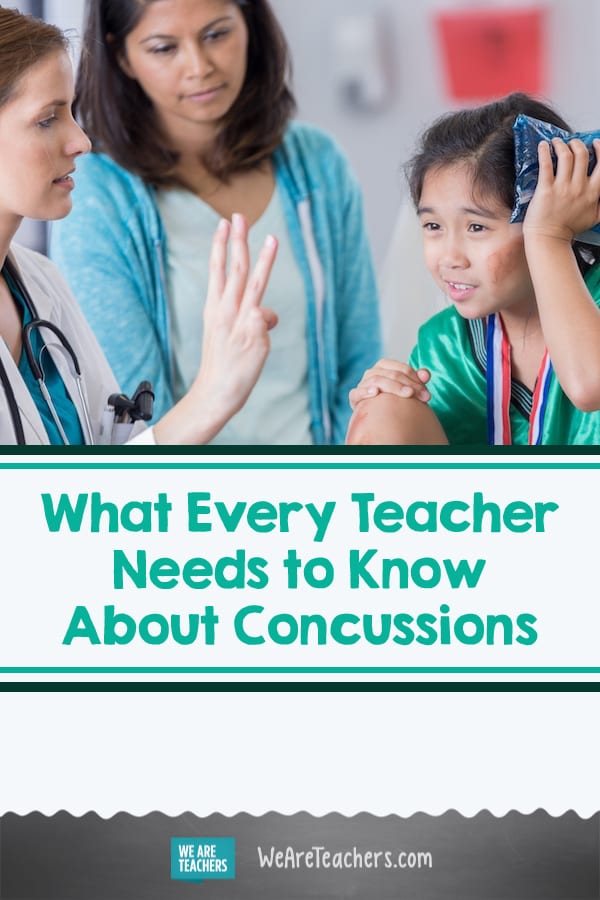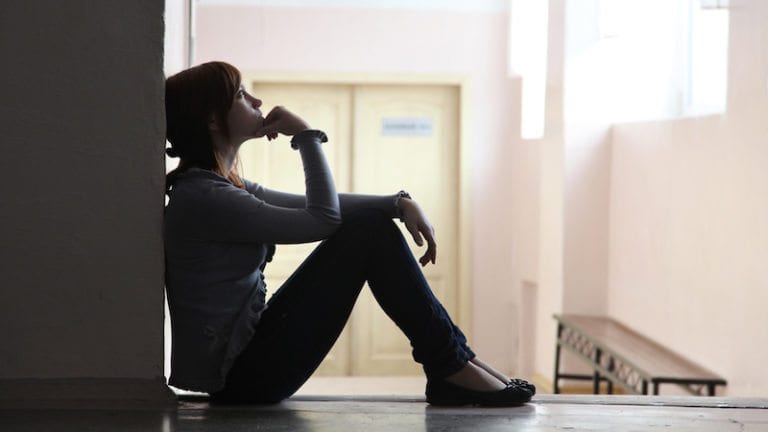Whether you work with preschoolers, elementary-age or older kids, head injuries are going to happen. And the reality is teachers are often on the front line when it comes to concussions. Here’s what you need to know.
What is a concussion?
A concussion is “a type of brain injury that changes the way the brain normally works.” A bump, blow, or jolt to the head can cause a concussion. “Concussions can also occur from a fall or blow to the body that causes the head and brain to move rapidly back and forth,” according to HEADS UP, an education initiative from the Centers for Disease Control and Prevention.
What are the signs and symptoms?
Contrary to popular myth, you don’t have to lose consciousness or hit your head to get a concussion. According to HEADS UP, about 90 percent of concussions occur without loss of consciousness and can also occur without directly hitting the head.
Plus, symptoms of a concussion could present themselves hours or even days after the injury. HEADS UP uses the ABCs for concussion recognition: assess the situation, be alert for signs and symptoms, contact a healthcare professional. As there is no one single indicator for a concussion, being aware of signs and symptoms is extremely important.
[contextly_auto_sidebar]
“About half of the concussions I see are not sports related,” adds Brenda Eagan-Johnson, cofounder of Get Schooled on Concussions. “Kids get concussions everywhere, from gym class to recess to hitting heads on lockers.”
After an injury, monitor the student to see if they appear dazed or confused, answer questions slowly, repeat questions, or show behavior changes. Symptoms reported by the student might include difficulty thinking clearly or concentrating, having a headache or nausea, vomiting, balance problems or dizziness, blurry or double vision, or fatigue. If any head injury occurs, have the student see the designated concussion team at your school.
Establish a school protocol.
Schools have drills and protocols for both safety and illness issues, but not all schools have a concussion protocol. What do you do if your student hits their head in the classroom? What is the gym teacher’s code of conduct for when two kids have a head-on collision? Concussions might not happen often, but they do happen. And just like we do with any situation in the classroom, we want to be prepared on all fronts.
Colorado’s Department of Education, in conjunction with Pennsylvania’s BrainSTEPS, promotes a Return to Learn Concussion Management Team (CMT) that includes two trainees, one to monitor academics after a concussion and one to monitor general symptoms. The team will communicate with the student, the teachers, parents, and medical providers to ensure that the student is recovering appropriately while also not falling behind in classes. “We want the teams to be multidisciplinary,” says Hotchkiss, “so that might include nurses, psychologists, social workers, speech language pathologists, and occupational therapists.”
Try an online training.
Top resources are available online for coaches, parents, and educators. Take one to add to your own knowledge or push for some school-wide instruction. Either way, you’ll end the trainings feeling more confident in recognizing the signs and symptoms of a concussion. And you’ll know what you and your student’s next steps are for recovery. Check out these resources:
HEADS UP
The CDC offers free online concussion training for healthcare providers, youth sports coaches, and high school sports coaches. The training is easy to use and quick (about 40 minutes for six lessons). HEADS UP also offers a free Acute Concussion Evaluation (ACE) care plan, which has a checklist for symptoms and signs as well as information on how to return to school, sports, or play.
BrainSTEPS
The BrainSTEPS training features 15 modules with videos that range from five to more than 60 minutes long. It helps educators increase their concussion knowledge, support student recovery, and create a Return to Learn Concussion Management Team.
Get Schooled on Concussions
Get Schooled on Concussions provides different levels of trainings for educators. However, coming in the fall from Get Schooled is a protocol called the Teacher Acute Concussion Tool (TACT) that Eagan-Johnson hopes will aid schools and return-to-learn programs. “The TACT will tell teachers what they need to do to support that student, based on main different factors,” says Eagan-Johnson. “Right now, states are all thinking about return-to-learn legislation, but there is no funding attached to it. You aren’t going to be able to train everyone,” she says, hoping that the TACT will be a revolutionary tool for students and schools.
Have you ever dealt with a concussion in your classroom? Come and share your experiences in our WeAreTeachers HELPLINE group on Facebook.
Plus, what teachers need to know about prescription drug abuse.


